The self-described prophet of the Branch Davidians cult, David Koresh led his followers into the Waco siege that left 76 of them dead in April 1993.
David Koresh believed that he was the final prophet of the Branch Davidians religious movement, sent to lead his people on the path of righteousness. He believed it was up to him to bring the word of God to his followers — and he would do it by whatever means necessary, even if it meant leading his people into the Waco siege that pitted his followers against the U.S. government.
He believed it all up until the day he died, killed by his own hand as the cultish kingdom he built crumbled around him. This is the disturbing story of David Koresh and the Waco siege of 1993.
David Koresh Joins The Branch Davidians
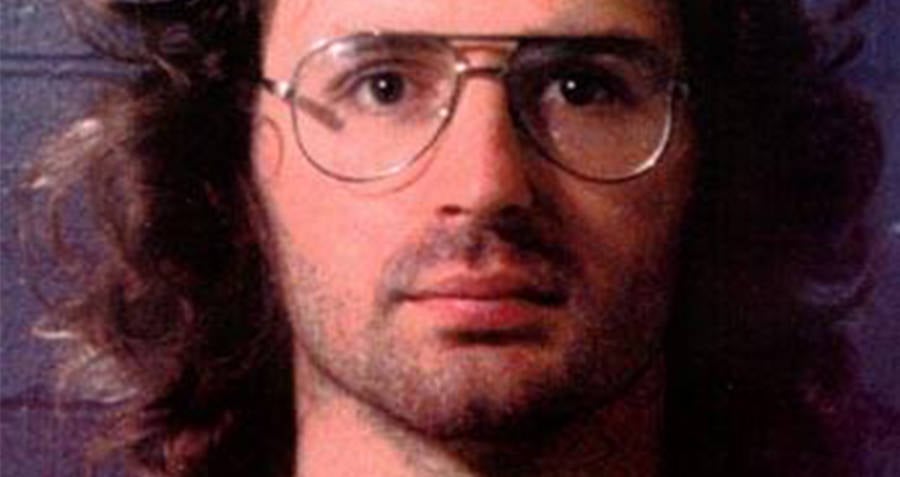
Wikimedia CommonsDavid Koresh, leader of the Branch Davidians of Mount Carmel.
David Koresh was born Vernon Wayne Howell on August 17, 1959, in Houston, Texas, and his life before joining the church was a difficult one.
His mother was just 14 when she had David, and his father disappeared before he was born. His mother’s new boyfriend was prone to violent outbursts and had a drinking problem — meaning David spent long stretches of time with his grandmother, who put him in special education classes because of his dyslexia.
Lonely and miserable, he dropped out of high school at the age of 17 and joined his mother’s church, the Seventh-day Adventist group. There, he fell in love with his pastor’s daughter and used a bible verse to claim to her father that God wanted the girl to be his mate.
Unsurprisingly, the pastor expelled him from the congregation.
Still yearning for some kind of spiritual connection, David Koresh moved to Waco, Texas, and joined the Branch Davidians at age 21.
A Desperate Struggle For Power At Mount Carmel

Getty ImagesMount Carmel, the home of the Branch Davidians in Waco, Texas.
Founded by Ben Roden, the Branch Davidians worshiped at a church compound known as Mount Carmel. Upon Roden’s death, his wife, Lois, took on leadership of the church, becoming the group’s prophetess.
Though Lois was 65 at the time of Koresh’s arrival, many Davidians believed that the new widow entered into a sexual relationship with Koresh, which gave him the power to move up quickly through the ranks of the church.
Whether the rumors were true or not, there was no denying that Koresh was a star on the rise. Before long, Lois allowed Koresh to begin teaching his own messages.
This raised more than a few eyebrows, and not only because some members of the congregation were having trouble getting on board with Koresh’s ideas.
The problem was Lois’s son, George Roden. He considered himself the rightful heir to Mount Carmel and the congregation, and he fully intended to take over for his parents upon their deaths — but with Koresh preaching, there was suddenly a new contender for the church’s top job.
Relations grew steadily worse. Koresh claimed that God had ordained that he should have a child with Lois, an idea that outraged and revolted George Roden.
Before long, their power struggle began to consume the church, and the Branch Davidians were forced to take sides.
When Roden got the upper hand, he forced Koresh and his most devoted followers off Mount Carmel property at gunpoint.
Vernon Howell Becomes David Koresh
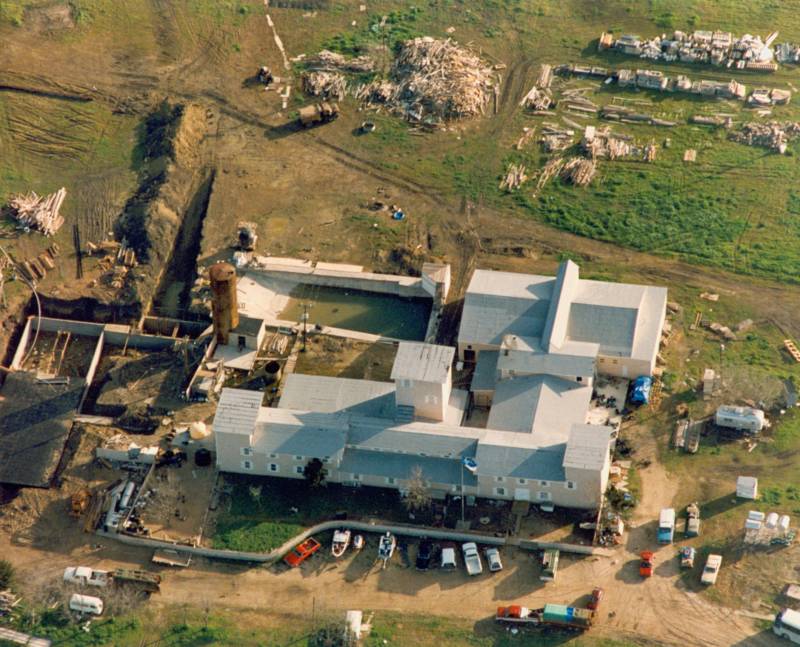
FBI/Wikimedia CommonsThe Branch Davidians compound outside Waco, Texas, before the attack. 1993.
Unable to return to the compound, Koresh brought his followers to Palestine, Texas, where he began teaching his own message and recruiting new followers.
His appeal was startlingly broad — he attracted not only worshipers from the United States, but also devotees from the U.K., Australia, and even Israel.
He was also growing more emphatic, preaching a bizarre and dramatic gospel. On one memorable visit to Israel, he had a vision that convinced him he was the modern-day incarnation of the prophet Cyrus.
But that wasn’t his most unusual conviction. Exile from the Branch Davidians had driven Koresh deeper into his delusions, and he began to claim that God had granted him strange powers. His fate, he was certain, would be martyrdom.
He became convinced through conversations with God that Mount Carmel was the earthbound site of the Davidic kingdom and that he must return.
So he changed his name from Vernon Howell to David Koresh — David after King David, and Koresh after the biblical name of Cyrus the Great — and began to plot his return.
Koresh Returns To Mount Carmel And George Roden Tries To Raise The Dead
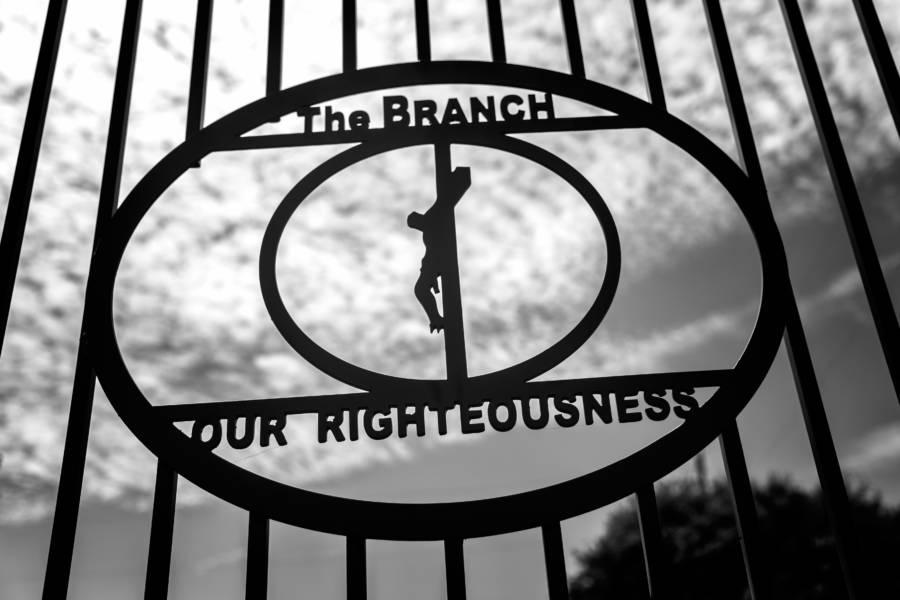
Lorie Shaull/FlickrThe gate to the Branch Davidians compound at Mount Carmel.
Coincidentally, around the time that Koresh was planning his reappearance at Mount Carmel, the Branch Davidians were losing faith in George Roden.
After his rival’s departure and his mother’s death, Roden had remade Mount Carmel in his own image, rechristening it “Rodenville” and generally acting the part of a tyrant. By the time Koresh returned, Roden’s followers were ready to mutiny.
Roden, panicked by his old enemy’s reappearance, went to drastic measures to secure his congregation’s loyalty. He challenged Koresh to an astonishing contest: whichever man could raise the dead would be the rightful spiritual leader of the Branch Davidians.
But Koresh had other plans. While Roden was exhuming and praying over the corpse of a woman who had been in the ground for 20 years, David Koresh was chatting with Waco authorities, who he felt would be interested to learn about Roden’s illegal exhumation.
They were indeed — but they weren’t going to march into a heavily armed, cultish compound without proof.
Koresh would later claim that what happened next was simply the result of his honest effort to get photographic evidence for the police. Curiously, however, he didn’t bother to bring a camera when he returned to Mount Carmel.
What he did have was camouflage, an invasion map, and a lot of weapons. He met a similarly heavily armed Roden, and a fight broke out. Shots were fired, and Roden was injured — though not fatally. The skirmish would go down in history as a missed warning sign and a precursor to the Waco siege.
When Koresh and his followers were put on trial for the attack, it wasn’t the first time the courts had seen the Branch Davidians. George Roden had attempted to litigate his rival out of the church several years earlier, when he claimed in a lawsuit that Koresh had raped and brainwashed his mother, Lois Roden.
Though Koresh and his followers were ultimately acquitted in the trial over their assault on Roden’s compound, the rivalry lost none of its intensity.
It only ended the following year, when Roden was charged with murder after he killed his roommate, Wayman Adair, with an ax. He believed the man was an assassin in the pay of David Koresh. Roden was actually found not guilty — but only because the jury ruled him insane and sent him to a mental hospital.
With the path to leadership finally clear, Koresh claimed Mount Carmel for his own.
David Koresh Takes Control Of The Branch Davidians
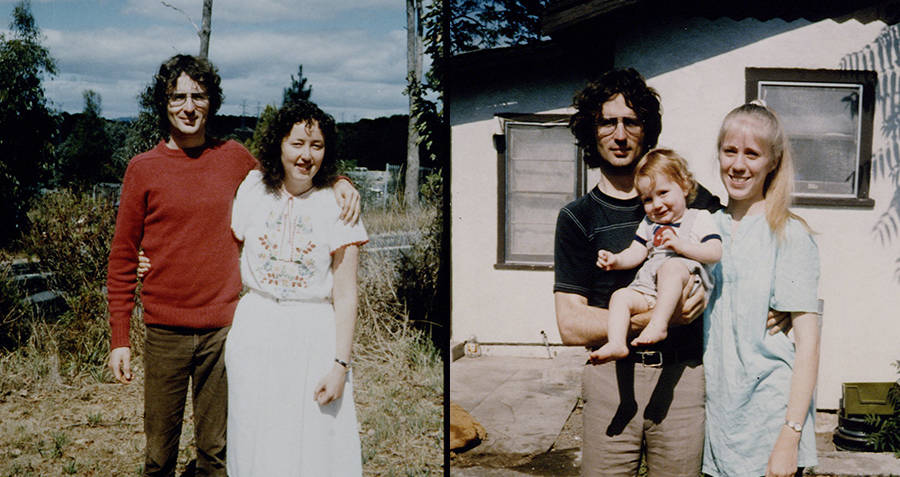
Getty ImagesDavid Koresh with members of the Branch Davidians, including one of his wives and children on the right.
Finally in his rightful place at the head of his prophetic kingdom, David Koresh began instating new rules for his followers and letting old ones (especially legal ones) fall by the wayside.
He encouraged marriages between men and multiple women, as well as marriages to underage girls, and engaged in sexual relationships with not only his wife but his wife’s 13-year-old sister.
After claims of child abuse appeared in newspapers, Texas Child Protective Services investigated Mount Carmel. Koresh covered the abuse by assigning false husbands to all of the women and teaching children not to mention what happened within the walls.
For three years, David Koresh ran his kingdom, teaching his controversial messages and encouraging his disturbing practices. To the outside world, Mount Carmel remained a fortress shrouded in mystery.
Then, on Feb. 28, 1993, the Bureau of Alcohol, Tobacco, and Firearms raided the compound.
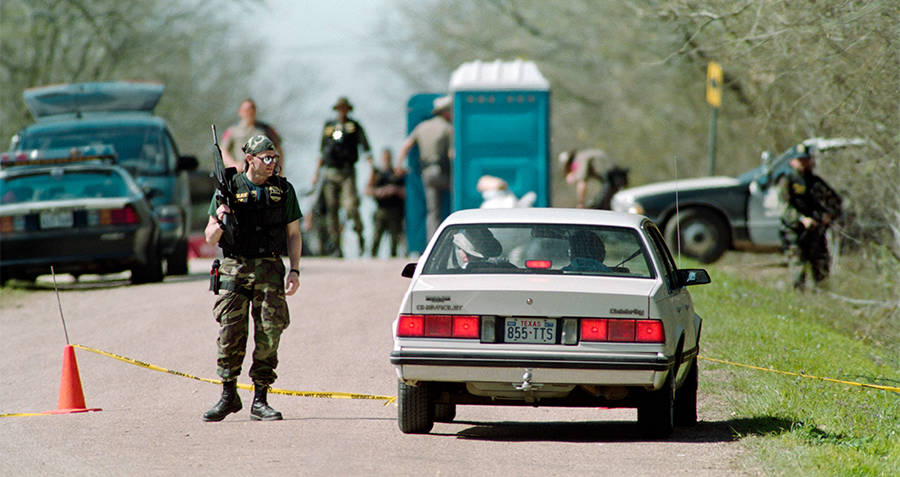
Bob Pearson/AFP/Getty ImagesATF agents guard all roads leading to and from the compound.
The day before, they had received word that Koresh was physically abusing children, engaging in polygamy, and stockpiling illegal weapons inside the compound’s walls. There had been reports of automatic gunfire coming from Carmel, as well as uncorroborated reports that a methamphetamine lab was being run out of the compound.
Koresh’s brother-in-law, a local postal worker, had tipped Koresh off about the raid after a journalist had asked him for directions to Mount Carmel while he was on his route. Koresh was able to prepare — not much, but a little. He asked the men to arm themselves and the women and children to take shelter.
Though there was a possibility of peaceful negotiation without bloodshed, few expected a tidy ending — especially given the compound’s violent history.
Following military procedure, all ATF agents wrote their blood types on their arms, as it facilitated faster blood transfusions in the event of a life-threatening wound.
To this day, there is a discrepancy over how the firefight began. ATF agents claim they only fired in response to shots that came from inside the compound. Branch Davidian survivors claim that the first shots came from the ATF agents.
Some have suggested that the first shot fired was an accidental discharge from an ATF agent that sparked a response from another ATF agent.
Whatever the case, the shootout sparked the Waco siege. It would be 51 days before it ended in catastrophe.
The Waco Siege

FBI/Wikimedia CommonsA tank destroys the roof of the Branch Davidians gymnasium. April 19, 1993.
When the ATF failed — four ATF agents and five Branch Davidians were dead — the FBI was called in.
David Koresh and a few other Branch Davidians had given phone interviews to several local news outlets as the ATF was advancing, but as soon as the FBI arrived, they cut all communication to Mount Carmel. The only way to reach the outside world from then on was through a team of 25 FBI negotiators.
At length, negotiators succeeded in reaching an agreement with Koresh. They stated that he could broadcast a message on national radio as long as he released the Branch Davidians. The FBI regarded the cult members as hostages trapped under the spell of Koresh’s religious zeal, not willing participants in the Waco siege.
In the end, it was a moot point; as soon as Koresh made the broadcast, he backed down from his offer, refusing to release any Davidians.
He then sent videos out to the FBI as proof that the members of his congregation were not hostages but holdouts who were staying inside of their own accord. Koresh himself appeared in the videos, introducing his seemingly happy children and “wives” to the negotiators.
Despite the videos, the FBI became increasingly anxious and aggressive in their approach, believing that the only way to get everyone out safely was with force.
Even the hostage negotiators became agitated; their tactics weren’t working. FBI leaders feared that the longer the situation went on, and the more the public learned about the compound, the more sympathy civilians would feel for Koresh and the Branch Davidians.
FBI officials were also worried about the degree of control David Koresh had over his flock. They repeatedly voiced concern over similarities between the Branch Davidians and the men and women who had died at Jonestown. Koresh, however, denied any plans for mass suicide.
The Grim Conclusion Of The Waco Siege And The Destruction Of Mount Carmel
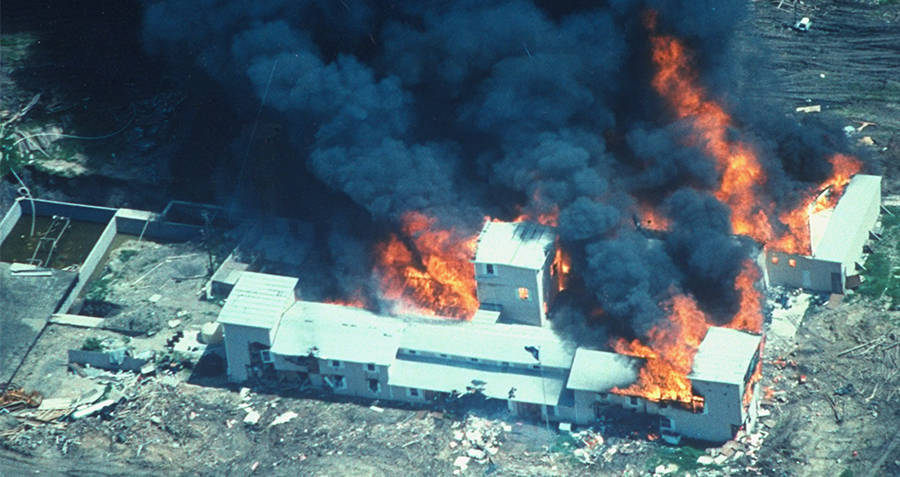
Wikimedia CommonsMount Carmel on fire during the Waco siege.
Over time, at least 21 children were released from Mount Carmel into FBI custody. Through interviews conducted by the FBI and the Texas Rangers, law enforcement officials realized that the children had been abused for years, not just as recently as the first reports.
Stunned by the revelation, U.S. Attorney General Janet Reno approved the FBI’s request to mount an assault.
On April 19, 1993, 51 days after the ATF descended on Mount Carmel, the FBI attacked the compound. They used Combat Engineering Vehicles to blow holes in the sides of buildings, through which tear gas was then thrown. When Branch Davidians fired upon the agents, the FBI responded with grenades and more rounds of tear gas.
A few hours after the tear gas was launched, three fires broke out in different parts of the compound, and an explosion occurred.

FBI/Wikimedia CommonsAn explosion rocks the compound, possibly from a propane tank that has caught fire. April 19, 1993.
The conflagration has been the source of controversy: a 2000 Justice Department investigation concluded that Branch Davidians themselves used accelerants and set the fires, while some Branch Davidian survivors allege that the fires started accidentally as a result of the FBI’s attack.
Despite the fires and the tear gas, only 35 Branch Davidians left the compound of their own volition. Seventy-six people, including five children, died within the walls as a result of smoke inhalation, burns, cave-ins, or gunshot wounds.
The FBI revealed at the end of the Waco siege that David Koresh had been found dead, apparently by suicide.
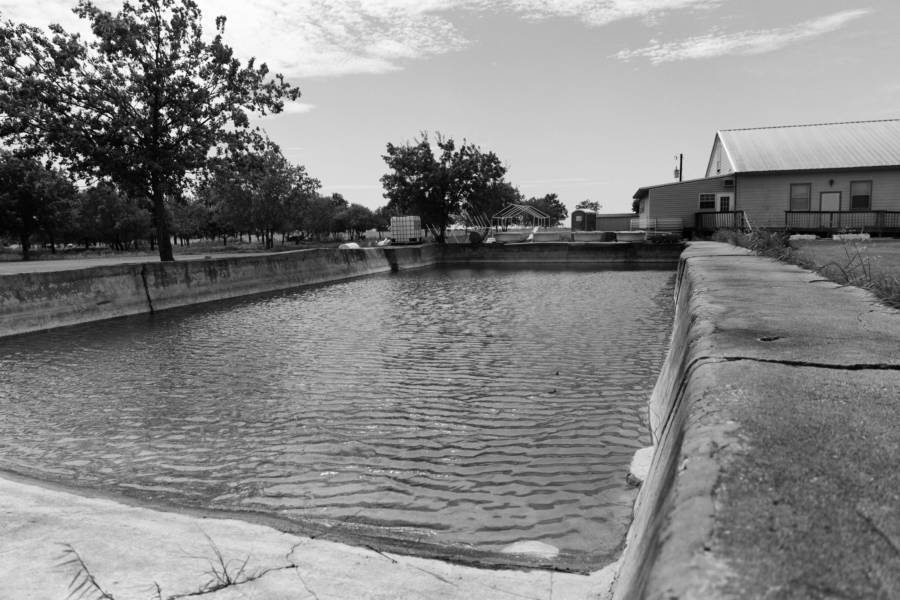
Lorie Shaull/FlickrThe remains of the Branch Davidian swimming pool, where the Mount Carmel children used to play. Aug. 16, 2017.
Though the FBI attacks were well documented, much remains unknown about what went on inside Mount Carmel during the Waco siege. The fires, in particular, remain a mystery, but the biggest question for many is what David Koresh told his followers.
Why had he kept them from leaving, even when their lives were at stake? How had he gone from negotiating with the FBI to refusing to let his juvenile followers out of a burning building? And finally, did David Koresh kill himself? Or had one of his followers finally had enough?

Lorie Shaull/FlickrThis is what remains today after the Waco siege: the cement foundation of the Branch Davidian compound. Aug. 16, 2017.
The Waco siege and its lingering questions have continued to haunt the popular imagination. The attack on Mount Carmel has been the subject of a number of famous documentaries, notably A&E’s 2018 two-part Waco: Madman or Messiah and Waco, the American TV miniseries put forward by Paramount in which Taylor Kitsch of X-Men fame plays a charismatic David Koresh.
The Waco siege has also left a darker legacy. Oklahoma bombers Timothy McVeigh and Terry Nichols were outraged by what they perceived as indefensible government overreach and cited the attack on the Branch Davidians as the inspiration behind their terrorist truck bombing.
Fascinated by David Koresh, the Branch Davidians, and the tragedy of the Waco siege? Next, learn how Jim Jones killed over 900 people during the Jonestown Massacre. Then, check out David Berkowitz, the Son of Sam serial killer.





